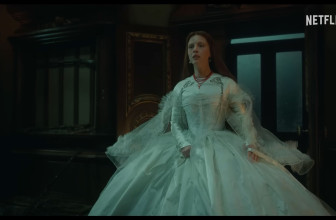Among the few mainstream horror directors of recent times that actually know how to make the genre work, is David F. Sandberg. Someone who, besides James Wan, is the only director to have made an actually good film in the Conjuring universe franchise. Sandberg has shown aspects of nuance in his career through and through. While the horror genre has been stuck in a phase where directors over-rely on narrative tropes and outdated mechanisms, it’s good to see someone who knows how to bring something new to the table. This out-of-the-box approach could most prominently be seen in his first highly famous feature film, Lights Out.
The best thing about a good horror film is that regardless of it being scary to a person or not, it manages to have you on the edge of your seats, much like Alfred Hitchcock’s The Birds or Steven Spielberg’s Jaws. Lights Out are something that succeeds at doing that and also scares the viewer decently.
How to Stream or Download Lights Out
To stream or to download the film from a digital store, click on the Download button that is located below this review.
The Movie Review
It begins in a textile factory around its last few hours, where an employee named Esther stumbles upon the silhouette of a bizarre woman with claw-like hands whenever the lights are turned off. The phenomena cannot be seen whenever the lights are on, and it adds to the film’s title as well. As soon as she leaves the factory, her boss Paul is killed by this mysterious silhouette.
The point-of-view then shifts to Rebecca, of who Paul was the stepfather. She goes to school together with Paul’s son and her stepbrother Martin, who as per the school nurse has been falling asleep during classes a lot lately.
It’s also revealed that their mother Sophie is a very depressed person, and speaks to a woman named ‘Diana’. Rebecca, who’s lived longer with Sophie knows of her mother’s inclination of talking with imagined characters or people. She’s also the one to confront her about abandoning her medication.
Eventually, Rebecca ends up having something other than her mother and her imaginary friend to be concerned about, after she’s woken and attacked one night by the same shadowy woman who killed Paul. A phenomenon from her childhood recurs when she sees the name Diana scratched on the wall, and that is when things begin to unravel.
From there begins a series of revelations and tightly crafted sequences that make a fairly captivating psychological thriller-horror film. The way Sophie’s past adds up to everything that carries on in the film is some subtle writing for a casual horror film.
It’s not a completely substantial psychological horror, but it’s one of the good instances of a mainstream horror film implementing aspects of psychological thrillers. The film fluctuates between substance and tropes quite often, but it’s mostly nuanced, and most things do go in favor of it. And unlike most commercial horror films, where everyone talks so much about the mysterious threat that it loses its shock value, Lights Out takes its time to let the threat develop by itself.
Besides minor repetitiveness and dialogue shortcomings at times, Eric Heisserer’s writing really aids the film. It provides the film with an engaging pace, polished characters, and mostly functional dialogues. David F. Sandberg’s direction is highly compatible with a film like this.
The vision behind this film may not be something out of the ordinary, but Sandberg still manages to provide Lights Out an identity. On top of it, Marc Spicer’s cinematography and Benjamin Wallfisch’s original score are mostly very suitable for the film too.
The Bottom Line
Lights Out is one of the better horror films of recent times. It’s not a must-watch, but it’s definitely something to recommend to the fans of horror, as well as those willing to start watching the genre. It’s nothing out of the ordinary, but benefits from a likable direction, writing, and technicality. It’s a film that today’s commercial horror films could take some lessons from.
















